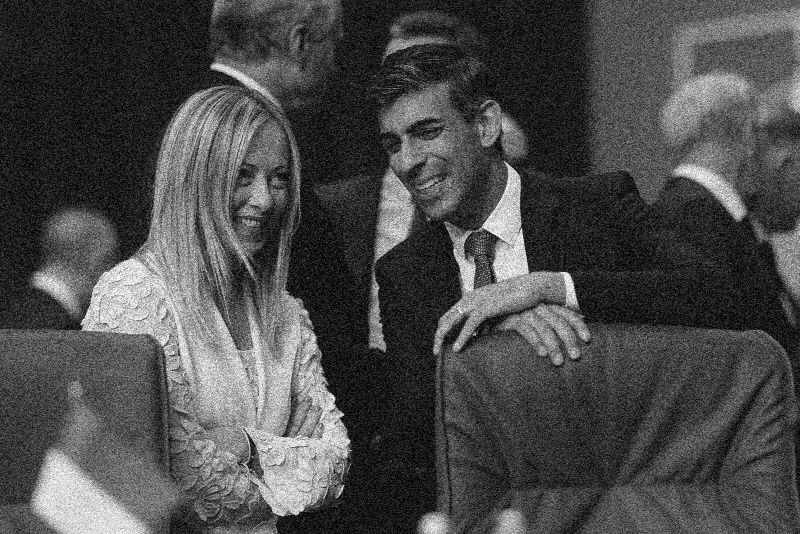Is European Populism Dead?
Arthur Boriello and Anton Jäger’s The Populist Moment helps us understand how political realignment is challenging European populism’s dominance.

Review of Arthur Borriello and Anton Jäger, The Populist Moment: The Left After the Great Recession (Verso, 2023).
The political landscape of the Atlantic world is divided in two. There are now states like the United States and parties such as the GOP where populism is present, and whole continents such as Europe where the political establishment seems more entrenched than ever. Yet in the recent past, between 2008 and 2020, both the USA and Europe saw an eruption of popular street movements, the establishment of new anti-elite “start-up parties,” and the take-over of established organizations across the Left-Right spectrum from Corbyn to Trump.
In Europe, the populist insurgency has now effectively ended. In its place, post-Covid, we have seen the exhaustion, electoral defeat, or moderation of left populist forces across Europe. By contrast, right populism seems to be going through a period of ideological retrenchment in Washington, where the Trump faction has functionally become the new GOP establishment while retaining its distinct ideological commitments. However, in contrast to the GOP, European variants of right populism are currently engaged in a rapprochement with the institutions of the old conservative establishment. In 2023, left populism seems like a spent force, while right populists are trading their insurgent positions for integration into EU norms.
Witness the collapse of Syriza in Greece, Podemos in Spain, Corbynism in the UK, the Sanders campaign in America, and the slow moderation of Scottish independence and the SNP. Tellingly, Syriza, the iconic party of millennial socialism, is now run by an ex-Goldman Sachs analyst and Joe Biden campaign staffer. In turn, the old Euroscepticism, anti-NATO, and anti-Atlanticist feelings of the populist and national-conservative Right in Europe have been transformed since the start of the Russo-Ukrainian war.
In Scandinavia, the Sweden Democrats are considering dropping their neutrality towards NATO. The post-fascist Giorgia Meloni now governs Italy as a traditional conservative who is openly “pro-EU and pro-NATO.” While in Poland, despite the ruling Law and Justice Party (PiS) breaking with neoliberal economics and the rule of law, support for NATO and the Washington foreign policy consensus is still high. Indeed, many think that the PiS’s over-focus, in the recent Polish election, on the culture war helped Donald Tusk’s centrist alliance clinch a narrow majority of parliamentary seats as populist voters’ concerns about infrastructure, economics, and foreign policy norms went unheeded.
A well-timed new book co-authored by the political scientist Arthur Borriello and the historian of political thought Anton Jäger, The Populist Moment: The Left After The Great Recession, seeks to explain why left populism failed to construct a lasting electoral coalition between the working and middle class, or to retain power once elected. Indeed, across the Atlantic from Paris to Washington, from Yorkshire to Ohio, the downwardly-mobile “brahmin” professional class and post-industrial workers have viewed each other with suspicion, when once they were allies, connected through contracts like the New Deal and European welfarism.
Inadvertently, Jäger and Borriello’s book, despite its focus on the Left, might also cast light on the political divergence, catalyzed by Ukraine, between American and European forms of right populism. The Populist Moment describes a politics defined by an unstable voting coalition—in this case, a union between the working class and the petite bourgeoisie “merchant” middle class. The instability of the Left’s coalition has led to progressive forms of populism going into hibernation, or almost vanishing, from the European and North American stage.
In contrast, the populist Right has managed to shepherd its equally fractious coalition into power in Italy, Poland, and Hungary. It now looks increasingly likely to win upcoming elections in the United States and France. However, the Trumpist Right, unlike European analogues, retains a distinct hostility towards the conservative, if not neoconservative, old establishment. Witness, for instance, the recent battle over the House speakership between hawks and isolationists in the GOP.
In contrast to the fractious American Right, the European center-Right is converging with the populist Right on the question of migration, and the populist Right is narrowing the gap with traditional conservatives regarding foreign affairs and security. This convergence makes it unclear whether figures like Meloni or the PiS’s Andrzej Duda are still normatively anti-establishment or traditionally insurgent. The electoral defeat of the continent’s populist Left alongside the normalization of the populist Right should make us wonder: is European populism dead?
Jäger and Borriello provide an answer to one side of this question: specifically, how and why the energetic and insurgent left populist projects that evolved from the anti-austerity protests of 2008-2010 came within inches of long-term power, before collapsing, like a house of cards, into electoral defeat. For Jäger and Borriello, left populism failed to retain power due to a series of maladaptations in organization and political practice. These maladaptations developed in response to both the rapid decline of traditional center-Left social democratic parties, and the fragmentation and atomization of associational life brought on by decades of neoliberalism.
The resulting weakness of mass-membership, social democratic parties and their twentieth-century auxiliary institutions (working men’s clubs, trade unions, non-conformist chapels, mutual aid societies, socialist bicycling groups) helped create what the political scientist Peter Mair has called “the void.” This is the gap between the rulers and the ruled left in the wake of mass party membership, trade unionism, and civic association. Yet, for the authors of The Populist Moment, this opening of the void is a half-complete process:
By and large, the very environment that enabled the parties in question to gain a foothold also proved profoundly disabling to them in the long term…. The populist left is a political species particularly capable of adapting to the new “ecosystem” of an unmediated democracy.… This ecosystem, however, contains one major risk factor—the void is either not empty enough or too empty altogether. Left populists had to work within structures of mediation that had undeniably been eroded yet had not wholly disappeared.
Jäger and Borriello describe a narrow path that left populist parties needed to traverse between half-formed and total atomization in the 2010s. As they argue: “The void thus birthed a double bind.” When too advanced, “the extreme atomization of the electorate dangerously increases the volatility and unpredictability of the political game.” Yet, where old forms of associational life retain vestiges of power, “the competitive advantage of traditional parties and the residual loyalty of specific social groups impose severe limits on populism’s capacity to build a cross-class coalition of its own.”
The Populist Moment details how forces including Corbyn’s Labour, Spain’s Podemos, and Greece’s Syriza navigated this mid-point of “the void.” It locates the void’s half-life in the “long 2010s,” a period running from “roughly from 2009 to 2022.” In this era, the balance between atomization and the survival of civic life was calibrated to allow outsiders to capture established organizations like the British Labour Party or attempt a “sorpasso” (electoral surpassing) of social democratic groups through new, lean populist party organizations such as Podemos and La France Insoumise.
Left populism’s strategic response to this “double bind” of partial atomization initially proved adaptive to circumstances, before reifying the very alienation it was meant to combat. As Jäger and Borriello point out, left populist parties, responding to the individualism and weakness of associational life around them, constructed organizations characterized by charismatic leadership, digital marketing tactics, fluid membership categories, and cross-class ambitions centered on “the people” rather than the working class.
This ultimately proved fatal for left populism and tied it to a passing moment. As Jäger and Borriello suggest, “One with its age, populism thereby revealed itself as a tragically transitory form of politics, tied to a specific electoral cycle and subject to the passing hype of a market society…. The left’s populist episode took place in a political sphere increasingly oriented on short-term gains and awash with exit options.”
Importantly, European right populism faced the same set of political, social, and economic conditions as the Left during the long-2010s. Yet, right populists have managed to engineer long-lasting administrations in Poland and Hungary, govern through a coalition in Austria, capture the government of Italy, and retain strong election results in Germany, France, and Sweden. This has not been without compromise. The strident anti-Americanism, hostility to European federalism (if not the union as a whole), and desire for a return to the sovereign security policy of earlier eras have been replaced with strong support for US hegemony in Poland and Italy and hesitant cooperation in Hungary.
The Populist Moment points out that the cradles of left populism, Europe’s anti-austerity marches of the early 2010s, proved inhospitable to those affected by a much longer process: deindustrialization. For Jäger and Borriello, the protests against tuition fees in England or the Indignados Movement in Spain combined a dominant millennial class of unemployed recent university graduates with a subordinate group of precarious urban service workers, while leaving out the industrial working class: “But it was the third group whose relative absence from the squares would soon become deeply consequential—the surviving industrial working class…. Its most passive components stubbornly refused to vote or opted for the far right.”
The association of industrial trade unionism with the bureaucratization and stagnation of the old social-democratic parties led left populists to yield at least half the working class to right populists. One can see this split play out in the Brexit vote of 2016, where the urban service precariat of London, Manchester, and Liverpool voted heavily for remain and Corbyn, while the old industrial working class of smaller towns voted both to leave and for Boris Johnson. Naturally, the old working class is still comparatively more unionized than urban gig workers, and the populist Right has benefited from this injection of associational life. This has allowed it to retain an ability to negotiate both the relics of industrial working-class associations and the free-form individualism of the lower-middle class. For instance, PiS in Poland aims for middle-class respectability with its pro-NATO and Catholic policies, while also claiming an anti-establishment working-class posture through strong welfare programs.
Jäger and Borriello see the populist Right’s ability to negotiate the terrain between associational life and total atomization through what they call the “swarm”—a semi-organized, digitally-mediated, ephemeral crowd. The twentieth century was defined by the existence of mass associations in churches and social clubs, and not only on the Left. For instance, the British Conservative Party had the largest membership of any political group in Britain as late as 1950.
Notably, these right-leaning associations, representing the interests of small capitalists and professionals, were almost as totalizing as those of labor. Throughout the UK, conservative associational bonds were made up of thousands of small-town associations, tennis clubs, women’s institutes, Freemason’s Lodges, and Anglican churches. In 2023, the sight of rain-sodden, run-down, and closed Conservative Clubs in rural and parochial England is as distinct a phenomenon as the disappearance of working men’s clubs and miners’ institutes in former colliery towns. This process has played out across Europe, from the decline of the Italian Communist Party’s Casa del Popolo to the end of religious “pillarization” in the Netherlands.
By the 2020s, the swarm had mostly replaced lower-middle-class, conservative, voluntarist associational life with realigned class coalitions, radically reshaping right-wing politics into an insurgent pose. For Jäger and Borriello, the swarm is characterized by the loose associations we see in libertarian protest movements: “Rather than a mobile mass, today’s QAnon troops and anti-lockdown protests look more like the infamous swarms: a group responding to short and powerful stimuli, driven by charismatic influencers and digital demagogues.”
Yet compared to its doppelgänger in the United States, the populist swarm of Europe is closer to the old working-class mass of the twentieth century. There has been comparatively little discontent among populist Right voters in Italy, Poland, or Hungary over the lockdowns or Ukrainian foreign policy. Compared to Trump’s GOP, European populist electorates' instincts are placidly statist. While the left populist coalition of graduates and the precariat is in disarray, the right populist alliance of the petite bourgeoisie, elements of big capital, and fragments of the old industrial working class have settled into a comfortable rapprochement with the liberal-conservative center-Right.
They cooperate, often in coalition, on issues involving Frontex and the policing of the EU’s borders, industrial policy, and security concerns involving China and Russia. Even more importantly, both the populist and traditional Right’s main opposition in Europe is now an increasingly conservative set of establishment social democratic and Green parties, which have once again overtaken their left populist rivals in the UK, Spain, Denmark, and Germany. Additionally, what remains of the 2010s left populism has taken on the clothes of conservativism: prominent leaders from Germany’s Die Linke, for instance, have adopted stringent anti-immigration policies. It now seems that the chaotic political realignment of the 2010s is once again shifting, turning back in on itself. For now, Europe is continuing a drift into uncharted waters as atomized populations trade idealistic insurgency for hard-nosed pragmatism.
In this sense, the “long 2010s” were not simply, as Jäger and Borriello argue, an ephemeral “populist moment” for the Left. Instead, the contingency of the last decade’s populism also extends to the European Right. While the USA remains a bastion of populist revolt, increasingly it seems Old World populism is on its deathbed. Whether further political shocks, like war, depression and disease, will resuscitate the forces of European populism is an open question. If they are revived, it will be in an unrecognizable form. Clearly, the distinctive populist politics of the 2010s are over in Europe: the epoch of millennial socialism and national conservatism is fading fast. In turn, the forces ready to replace them, the yet unnamed insurgencies of the late 2020s, are in utero, waiting for their moment.
■
Samuel McIlhagga is a British reporter and book critic covering foreign affairs, culture, and political theory.



